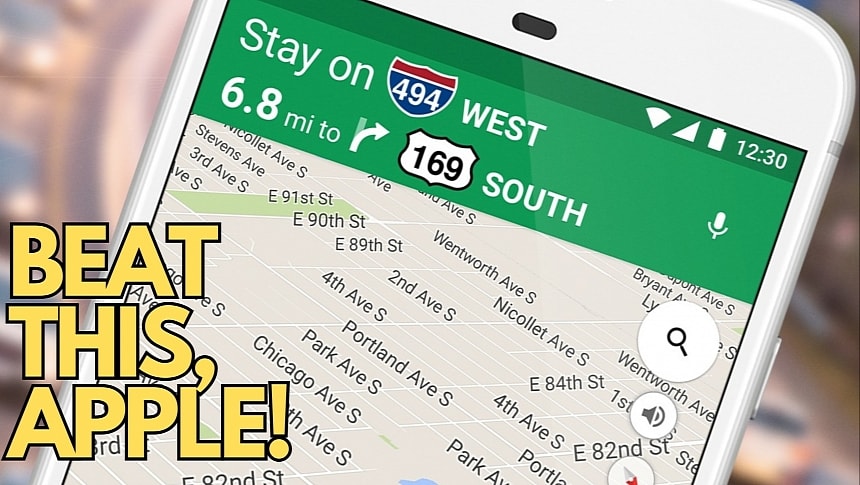Apple is catching up in the navigation wars, and Google knows it can't afford to rest on its laurels. The company is working on several new-generation features for Google Maps, and one of the most recent has been spotted in a patent application.
The patent describes a technology called "providing navigation instructions to one device in view of another device," and while its name sounds complex and complicated, the whole idea comes down to offering navigation for groups (or, at least, more than a just one device).
The idea of co-navigation, or multi-car navigation, is not new, as several other companies have explored similar technologies, mainly for autonomous cars. However, if this idea makes its way from the patent stage to development, Google could become the first tech giant to update its application with such capabilities.
The group navigation is aimed at people who drive to the same location from different starting points. The first driver setting up co-navigation can configure the destination and invite other users to the group (a Google account will be needed), so everybody in the list will see the same destination with personalized routes.
Google Maps will offer ETA information for all members of the group, so when you drive to the destination, you'll also see when others are projected to arrive at the destination. Google Maps can also offer real-time information and up-to-date traffic data obtained from the first vehicle driving to the configured destination. It can avoid potential slowdowns, like accidents and traffic jams, and guide the rest of the group on an alternative route if it discovers a major delay.
The lead vehicle can also provide parking information so that the other members of the group will know where to park in advance when they arrive at the destination. Eventually, Google Maps can offer speed adjustment suggestions to help all members of the group reach the meeting point at the same time (this would only be helpful when traveling outside the side, as heavy traffic could significantly impact the ETA depending on the starting point and how far you are from the destination).
The patent also suggests that Google Maps could be updated with voice chat capabilities, allowing members of the same group to talk when they drive to the destination, but this is highly unlikely, albeit such capabilities could be powered by other Google solutions.
However, it's important to keep in mind that the discovered patent is still a proposed idea and not a certain thing. Companies sometimes patent their ideas without pursuing them, so you'd better not hold your breath to see Google Maps expanding in this direction, despite navigation for groups making sense when you and your friends drive to a meeting point.
The idea of co-navigation, or multi-car navigation, is not new, as several other companies have explored similar technologies, mainly for autonomous cars. However, if this idea makes its way from the patent stage to development, Google could become the first tech giant to update its application with such capabilities.
The group navigation is aimed at people who drive to the same location from different starting points. The first driver setting up co-navigation can configure the destination and invite other users to the group (a Google account will be needed), so everybody in the list will see the same destination with personalized routes.
Google Maps will offer ETA information for all members of the group, so when you drive to the destination, you'll also see when others are projected to arrive at the destination. Google Maps can also offer real-time information and up-to-date traffic data obtained from the first vehicle driving to the configured destination. It can avoid potential slowdowns, like accidents and traffic jams, and guide the rest of the group on an alternative route if it discovers a major delay.
The lead vehicle can also provide parking information so that the other members of the group will know where to park in advance when they arrive at the destination. Eventually, Google Maps can offer speed adjustment suggestions to help all members of the group reach the meeting point at the same time (this would only be helpful when traveling outside the side, as heavy traffic could significantly impact the ETA depending on the starting point and how far you are from the destination).
The patent also suggests that Google Maps could be updated with voice chat capabilities, allowing members of the same group to talk when they drive to the destination, but this is highly unlikely, albeit such capabilities could be powered by other Google solutions.
However, it's important to keep in mind that the discovered patent is still a proposed idea and not a certain thing. Companies sometimes patent their ideas without pursuing them, so you'd better not hold your breath to see Google Maps expanding in this direction, despite navigation for groups making sense when you and your friends drive to a meeting point.















